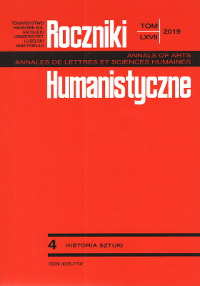Dekoracja okazjonalna (1715) w kościele Jezuitów w Lublinie. Ze studiów nad ikonografią św. Stanisława Kostki
Occasional decoration (1715) in the Jesuit church in Lublin. Iconography of St. Stanislaus Kostka
Author(s): Janina DzikSubject(s): Fine Arts / Performing Arts, Visual Arts, History of Art
Published by: Towarzystwo Naukowe KUL & Katolicki Uniwersytet Lubelski Jana Pawła II
Keywords: St. Stanislaus Kostka; the Jesuit church in Lublin; Clement XI
Summary/Abstract: Lublin, a city that is the seat of the Crown Tribunal, was one of the centers where St. Stanislaus Kostka was especially venerated. The main center of worship was the former Jesuit church of the St. John the Baptist and St. John the Evangelist (the present cathedral), where the miraculous image of the young man was kept.The discovery of the note in the hand-written chronicle of the Romanum Societatis Jesu Archives reminds us of the occasional decoration of the Jesuit church during ceremonies connected with the announcement of the canonization of Stanislaus Kostka in 1715. The expanded multifaceted picture-verbal decoration focused primarily on the facade, main altar and chapel, bringing together the national aspect (Polish king), the papal aspect (Pope Clement XI) and the prophetic sign, for which the coat of arms of the Albani family from which the Pope came. The Polish nobleman-priest was created from the beginning of the cult to become one of the main supporters of the triumphs of the Polish State. The canonization of Stanislaus became a symbolic guarantee of the expected peace and stability of the country. That is why the decoration revealed a great historical message and a mystery given to the Poles through the young Jesuit, raising the importance of Poland in connection with the papacy and Catholic faith.
Journal: Roczniki Humanistyczne
- Issue Year: 67/2019
- Issue No: 4
- Page Range: 45-60
- Page Count: 16
- Language: Polish

